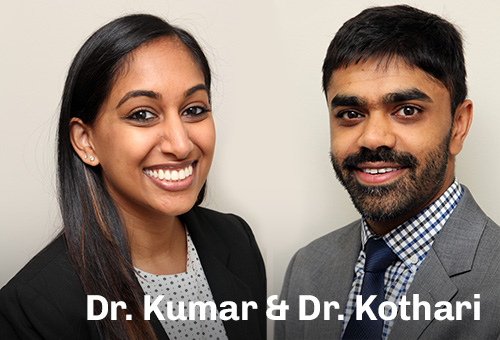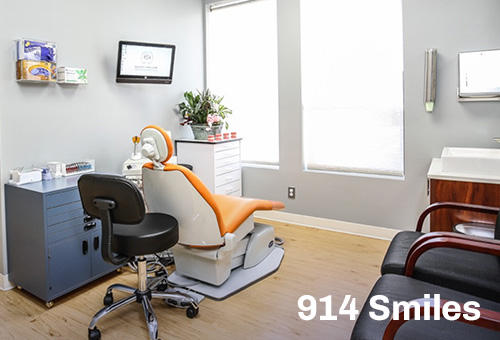
What to do When Your Child’s Tooth is Loose
When a little one has a wiggly tooth, it can be a cause for celebration and mean a visit from the Tooth Fairy is on the horizon. However, if a child has a loose permanent tooth or their baby teeth are falling out early, then it’s time to call a pediatric dentist like Dr. Reshma Kumar. As a Tarrytown kids’ dentist, Dr. Kumar gets questions from parents about everything from how to anchor a loose tooth to whether or not to pull a wiggly baby tooth. To help, the 914 Smiles team is sharing how to handle loose teeth in a variety of scenarios.
In this post, we’ll cover:
The Basics of Losing Baby Teeth
When does a child lose their first tooth?
Parents often ask, when does a child lose their first tooth? The majority of children lose their first tooth between 5 and 6 years of age, though it can happen a little earlier or a little later. They commonly fall out in the same order they erupted with the upper and lower front teeth the first to go, followed by the ones on either side. This continues until all of the baby teeth have fallen out and have been replaced by permanent teeth. Kids lose teeth until around age 12.
Should I pull a child’s loose baby tooth?
In most cases, baby teeth will fall out on their own. We usually recommend that parents avoid pulling a loose tooth, especially if it just started getting wiggly. Why? Well, it might not be fully ready to come out and taking it out can sometimes result in damage to the gums or the underlying permanent tooth.
If your child’s wiggly tooth has been hanging in there for a while, it’s within the normal timeframe for coming out (take a look at this teeth eruption chart to get an idea for timing), and your kiddo wants you to pull it, then you can take matters safely into your own hands. As for how to pull a loose tooth, first, make sure it’s extremely loose and push on the tooth to see if your child feels any pain. If pressing the tooth is painful, it could mean the roots haven’t dissolved enough yet. If it’s super wiggly and not painful, wash your hands and then cover the tooth with a clean tissue. Squeeze the tooth and it should pop out easily.
What to do if Baby Teeth are Falling Out Early
How can you tell if baby teeth are falling out early?
You can tell if a baby tooth or baby teeth are falling out early if they’re loose and it’s not anywhere near the age range they would normally come out. However, most of the time, you’ll know because the tooth is loose or falls out due to injury or decay. If this happens, contact your pediatric dentist.
In ideal circumstances, a baby tooth falls out because the permanent tooth below it pushes it out as it begins to erupt. The permanent tooth then comes in shortly after the primary tooth hits the road. When baby teeth fall out early and no permanent tooth is waiting in the wings, the surrounding teeth have a tendency to shift and fill in the gap. This can block the permanent tooth from coming in, leading to an impacted tooth and/or resulting in crowded teeth that require orthodontic treatment.
Can I pull a baby tooth that’s coming out early?
Wondering how to get a loose tooth out when it’s not time for the tooth to fall out naturally? Don’t. Instead, schedule a visit with your child’s dentist. Sometimes, we can save a loose baby tooth, especially if you visit the office within the first few hours of an injury. While we don’t usually do any serious manipulation with a primary tooth, there are times when it’s possible to simply reposition it with our fingers. By securing the tooth, it can continue to do its job of holding space for the permanent tooth below it to come in properly.
If the tooth is very loose and cannot be safely repositioned, we might gently pull your child’s tooth and then use a dental space maintainer. What is a dental space maintainer? A dental space maintainer is an appliance that is placed where your child’s tooth fell out. It holds space for the permanent tooth and prevents the other teeth from drifting into the gap. This can go a long way in warding off future dental crowding.
How to Handle a Loose Permanent Tooth in a Child
A loose adult tooth, or permanent tooth, is a whole different story. A child should never have a loose adult tooth unless they’re in orthodontic treatment, in which case it’s normal for teeth to feel a little loose. Otherwise, it’s an indication that something is wrong. Most instances of a child having a loose permanent tooth are from injury or decay. Rarely, severe gum disease can lead to loose teeth, though when this occurs with kids, it’s usually in the teenage years.
What should I do if my child’s permanent tooth is loose or knocked out?
If your child sustains an injury to the face, such as from a fall or an accidental elbow during sports, and has a loose adult tooth, call the pediatric dentist right away. Just as with a baby tooth, we can often reposition, or even reimplant, a permanent tooth within a few hours of the injury. If your child’s tooth is loose, try to have them avoid biting down on it or wiggling it and head straight to the dental office.
If your child’s tooth is knocked out completely, gently and carefully pick up the tooth, holding it by the crown and avoiding touching the root. You can store the tooth in a cup of saliva or milk to prevent dehydration and go to the dentist right away.
How to anchor a loose tooth
As for how to anchor a loose tooth, never try to secure a loose tooth on your own at home. Instead, wait for your dentist to take a look. Sometimes, we can reimplant and reposition a tooth with our fingers. This has the best chance of success if we’re able to treat the patient within an hour or two of the tooth becoming loose. Other times, we have to determine how to anchor a loose tooth so that it’s stabilized and the bone, tissue and ligaments have time to tighten back up and hold the tooth in place. When anchoring a loose tooth, we may use special wires or dental materials.
If a child’s loose adult tooth can’t be saved, or a lost tooth isn’t able to be reimplanted, then restorative treatment, like a dental implant or dental bridge, could be necessary. These tooth replacement options will ensure your child still has a confident smile and they’re able to chew and speak properly.
Whether you’re looking for emergency dental care for a child with a loose permanent or primary tooth, you’re concerned about your little one’s baby teeth falling out early or you want guidance on dealing with loose baby teeth in general, we’ve got you covered. Schedule an appointment at 914 Smiles with our Tarrytown pediatric dentist today!



